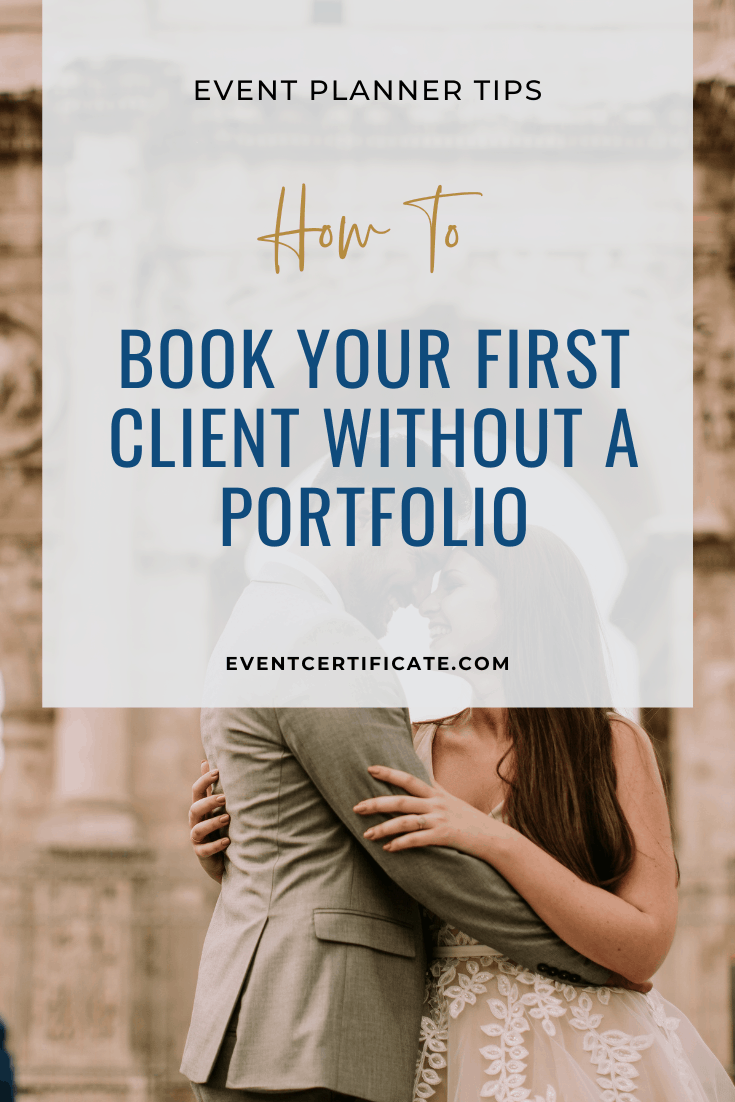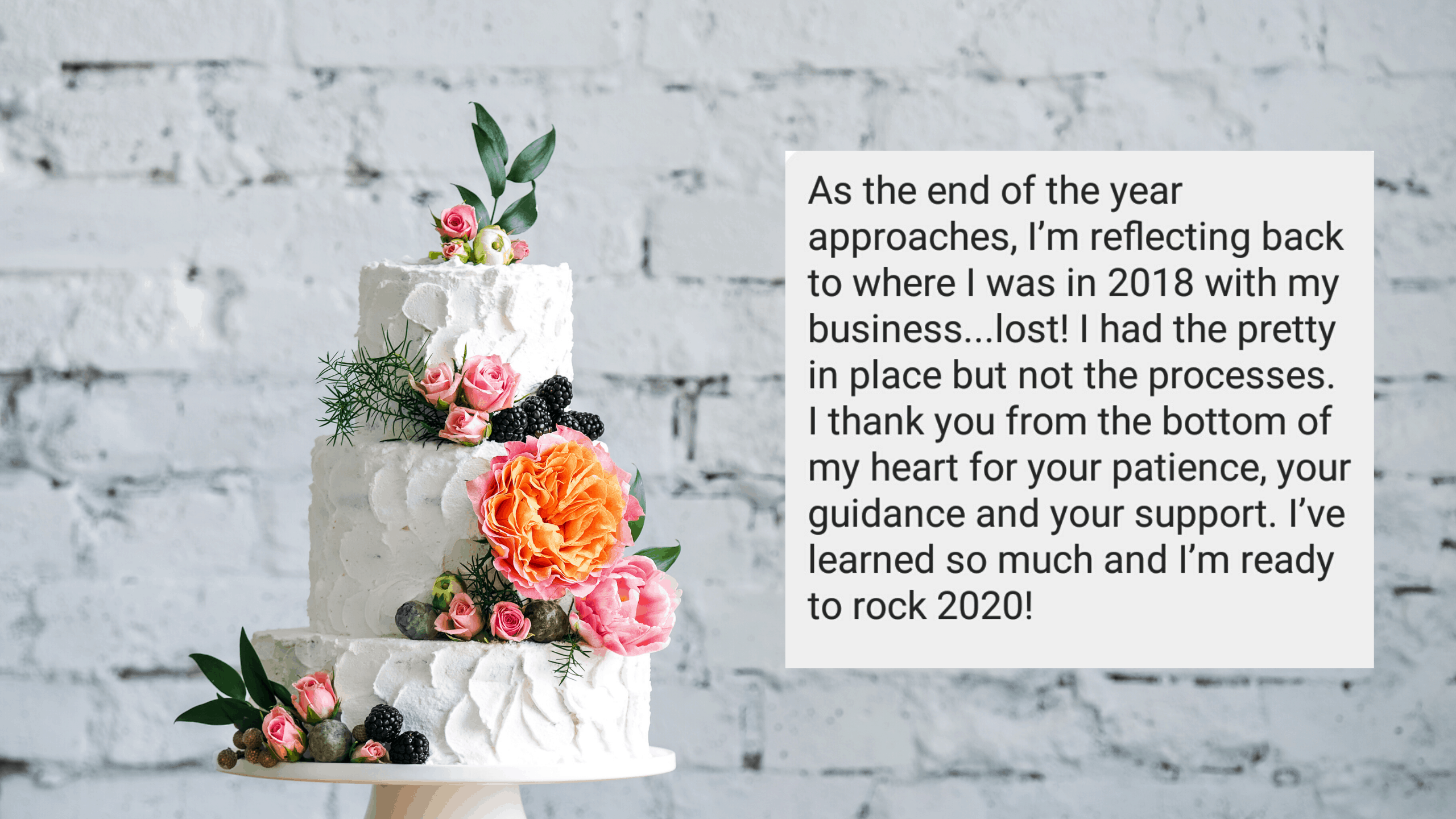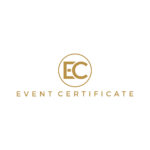Launching your event planning business and booking your first client can be daunting, especially without a portfolio to showcase your skills. This post is here to help! We all face challenges securing those initial paying clients. But not to worry, these tips will equip you to navigate the exciting (and sometimes nerve-wracking) early days of your event planning journey.

How do you confidently book a client without a portfolio?
Event planning is a very visual industry. Clients are often persuaded when they can see a portfolio of your past work, as a way to gauge your talent and experience. Sure you could get your mom, dad, aunts, and grandparents to write testimonials about how amazing you are (kidding!), but what proof does that provide to potential clients looking to see evidence of your planning and design skills?
It is difficult when you’re first starting out, but I promise as you grow your business it gets better. Today I’m sharing four strategies you can use right now to get started booking your first client without a portfolio.
1. Offer your Event Planning Service for a Lower Fee
One of the fastest ways to book clients without a portfolio is to offer your service for free or at a lowered cost. I know, you’re just getting started with no revenue and my advice is to make even less money? but hear me out.
You can do this in a number of ways, such as volunteering with an organization to plan an event, or offering your service to individual clients. Also, explore creating awareness about your service by posting in free Facebook groups for brides and newly engaged couples, posting an ad on a directory such as Craigslist, or on a 3rd party marketplace such as Wedding Wire. This is a great option for booking new clients, even though unpaid, so you can gain experience and get content to add to your portfolio.

PRO TIP: I also recommend using these clients to develop your event planning business processes as well. For example, If you were unsure of how to price your event planning service. Use this experience to track the number of hours it takes to plan each event for your reference. You can also track the items you need to purchase and the costs associated with these for future client proposals.
Think of events strategically to create templates for your business, such as an event planning timeline, budget, and contract. These templates will be reused numerous times in your business. Just think of it like this, working on an event with $0 cost to your client, allows you the time to test and develop your business processes.
Even more valuable is the addition to your portfolio. You will now have photos from these events to build your brand and attract more clients. These can be used on your website and social media accounts to market your business. Most importantly you will now be able to get feedback and testimonials that you can provide to future clients.
2. Use your Past Event Experience
Most event planners I’ve met started out planning events for friends and family before joining the industry professionally. Even if your experience is not with a paying client you can still use this to represent your work. When you’re struggling with booking your first client without a portfolio, it’s time to get creative. For example, helping your sister plan her wedding won’t be much different from helping a client plan theirs. The main difference is that you are being paid, and will therefore have greater responsibility for what you deliver and how it is delivered.
If you plan all the birthday parties in your family, use these as samples of your work. Organize your events as if you are working for a client, and document the process and time it takes to complete the event. Be sure to also take lots of photos that you can use in your portfolio to show potential clients. Even though these are for friends and family they are still proof of your skills and expertise!
3. Create your Own Event Portfolio

If you can’t get a seat at the table, build your own. I’ve always loved this saying, and nothing rings more true when it comes to creating your own events as a way to build your portfolio. If you do not have any client or family events to add to your portfolio, there are actually two additional ways in which you can create one:
A. Styled shoots for booking your first client without a portfolio
When it comes to creating your own event, one effective strategy is to design a styled photoshoot. A styled shoot is essentially a “mock event”, used to create samples of your work that can be shown to potential clients. It involves collaboration between multiple vendors, including an event planner, photographer, florist, baker, and others. By working together, the vendors can stage an event specifically to capture branded images. The shoot also allows each vendor to showcase their unique skills and creativity, with the end result being a beautiful collection of images that can be used for marketing purposes. In addition, the photos can be a valuable resource for clients, providing them with inspiration and ideas for their own events. Overall, designing a styled photoshoot can be a powerful way to promote your services and establish your reputation in the event planning industry.
B. Self-hosted events for booking your first client
Another effective way to build your portfolio is to host your own event. This could take many different forms, depending on your goals and the types of events you are interested in planning. For example, if you are new to the industry and looking to establish your reputation, you might consider hosting a business launch party. This could be an opportunity to introduce your services to potential clients and partners, while also showcasing your skills and creativity as an event planner.
Alternatively, you might consider hosting a wedding pop-up event in collaboration with other vendors. This type of event would allow you to network with other vendors, while also demonstrating your expertise in wedding planning and design. By working together, you and your collaborators could create a beautiful and memorable event that would serve as a valuable addition to your portfolio.

Another option is to host a networking event for other professionals in the industry. This type of event could be a great opportunity to build relationships with other event planners, photographers, caterers, and more. By connecting with other professionals, you can learn from their experiences, share your own insights, and build a strong network that will support you throughout your career.
We often network within and across different industries. For example, we were named an expert by Redfin from building our network. Check out the article we were featured in: How to Host a Party in a Small House: 6 Must-Read Tips.
Regardless of the type of event you choose to host, the key is to use the opportunity to create valuable content for your portfolio. This might include photographs, videos, and testimonials from satisfied clients or collaborators. By showcasing your work in this way, you can establish yourself as a talented and creative event planner, and attract new clients who are excited to work with you.
4. Source Testimonials from your Past Employers

Even if your previous work experience is not in the event planning industry, there are still ways to build your business and earn the confidence of potential clients. One effective strategy is to gather testimonials from past employers. While testimonials from family and friends are certainly helpful, those from past employers can carry even more weight, as they are likely to be seen as more credible and objective.
When asking for a testimonial from a past employer, it’s important to ask them to speak to your work ethic, character, and professionalism. Even if they can’t speak directly to your event planning skills, they can still provide valuable insight into your personality, work habits, and general approach to your job. By showcasing these qualities, you can give potential clients a sense of what they can expect when working with you, and help build trust and confidence in your abilities.
These types of testimonials are particularly important for new event planners, who may not yet have a large portfolio or a track record of successful events. By providing evidence of your professionalism and dedication, you can help ease any concerns potential clients may have about working with someone who is new to the industry.
In addition to building your credibility with potential clients, testimonials from past employers can also serve as valuable references in the event that a client wants to verify your work history or qualifications.
Conclusion: Booking your First Client Without a Portfolio
In conclusion, building a portfolio is essential for any event planner looking to establish themselves in the industry. But what if you don’t have a portfolio to start with? The key is to remember that everyone has to start somewhere, and there are a variety of ways to gain experience and exposure even if you don’t currently have paying clients.
One effective strategy is to be strategic about how you build your portfolio. This might mean taking on pro bono work, collaborating with other vendors to create styled photoshoots, or even hosting your own events. By being proactive and creative in your approach, you can quickly build a collection of work that demonstrates your skills and creativity as an event planner.
It’s also important to be open to stepping outside of the box in order to gain experience and exposure. This might mean seeking out unconventional opportunities, such as volunteering to plan events for local nonprofits or community groups or taking on smaller events or gigs to gain experience and build your network. By being flexible and willing to try new things, you can quickly build up your portfolio and establish yourself as a skilled and reliable event planner.
In short, booking your first client without a portfolio is certainly a challenge, but it’s doable. By being open to new opportunities and experiences, you can quickly establish yourself as a talented and creative event planner, and start attracting the clients and projects that will help you take your business to the next level.




Comments are closed.